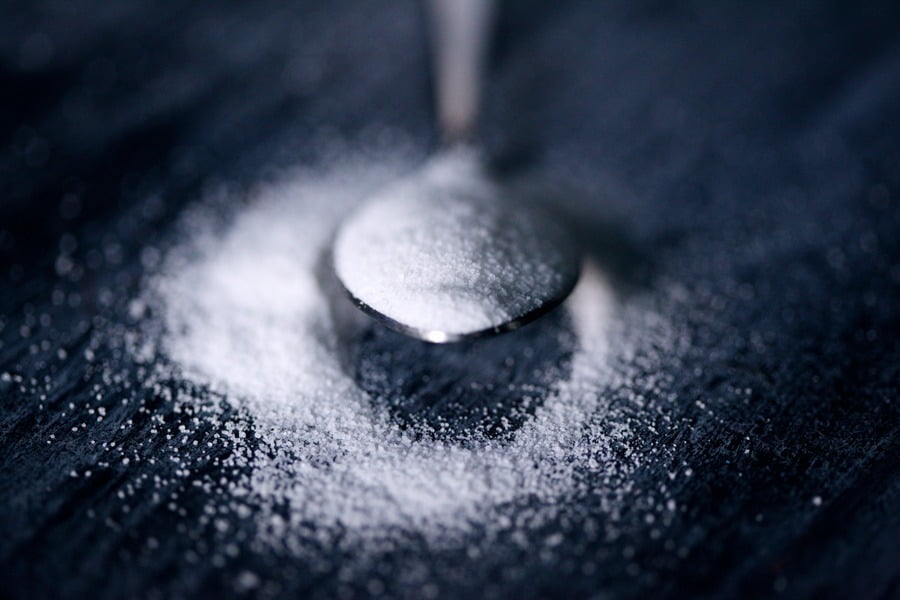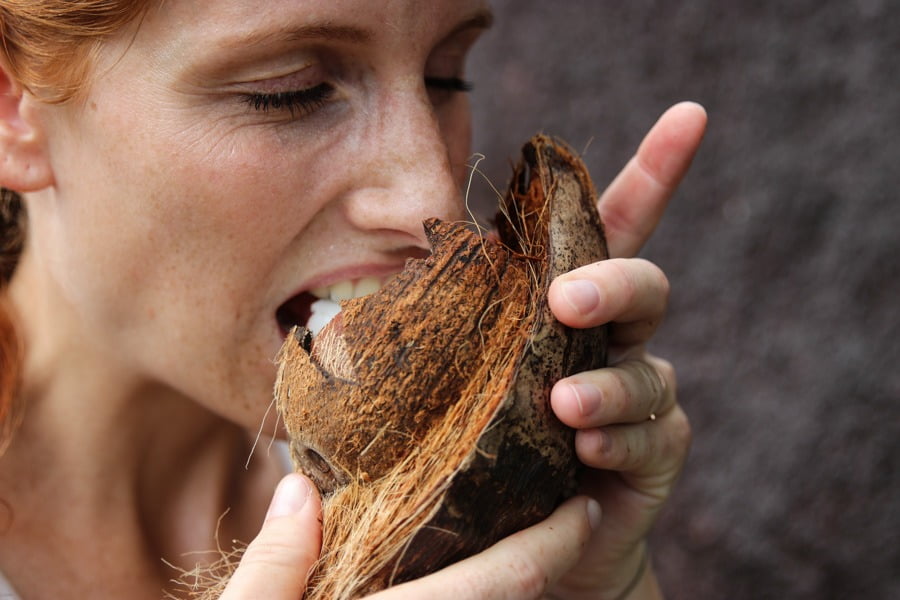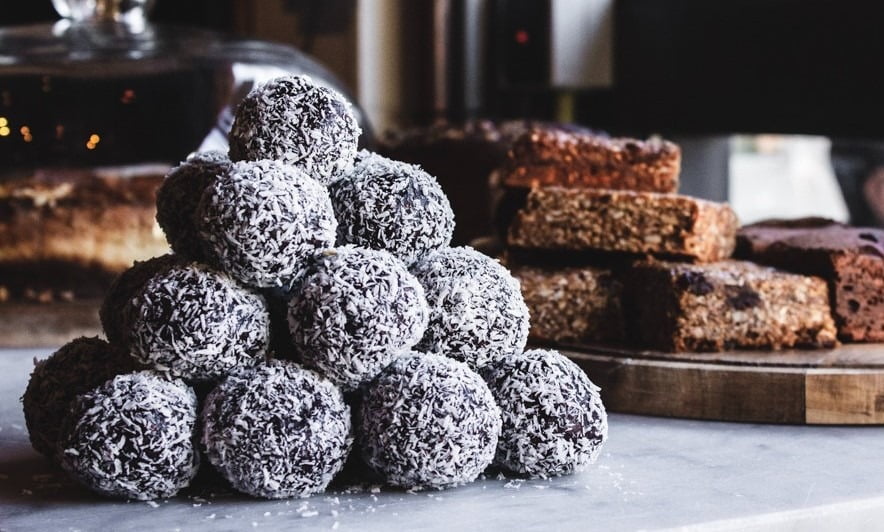Do you regularly suffer from fatigue and migraines ? Are you putting on weight, mainly in the abdominal area? can’t resist frequent cravings ? Do you wake up with swollen, puffy skin ? Your sugar intake may be the cause of these symptoms. Find out how a sugar detox can solve many of your problems and discover the must-visit establishments selected by Luxe Wellness Club.
The different sugars in your diet
The fuel your brain and body need to function, sugar has often taken on far too important a role in your daily diet. The WHO recommends a maximum consumption of 50g of free sugars (sugar naturally present in fruit juices and honey + added sugars)/day/person. The French consume an average of 80g/day.
Nature provides you with five main types of sugar:
1. Glucose. It is present in virtually every food you eat, and is a crucial source of energy for the body. Bread, oats, rice, pasta, fruit and vegetables break down into glucose in the body. When we talk about glycemia, we’re still talking about glucose.
2. Starch. It’s a complex carbohydrate found in cereals, legumes, starchy fruits (bananas, chestnuts) and tubers.
3. Lactose. Lactose is made up of two sugars: glucose and galactose. Lactose is found in cow’s milk products.
4. Sucrose Or table sugar, composed of 50% glucose and 50% fructose. It is naturally present in sugar cane, sugar beet and most fruits.

5. Fructose. Fructose is a simple sugar, like glucose. Unlike fructose, which has always been ubiquitous in nature, fructose was once a rare sugar found only in fruit, certain root vegetables and honey.
It can now be found everywhere. Cheaper and easier to process, it has become the ally of the food industry: fruit juices, soft drinks, energy drinks, ice creams, chocolate, candy, all foods containing refined sugar.
Last but not least, you will also find on your packets of cakes, sweets and ready-made meals the terms glucose syrup, isoglucose, dextrose, maltose, invert sugar, dextrin or maltodextrin. They are all processed sugars. Although they facilitate the processing and preservation of many products, it is above all for their economic benefits that the agri-food industry puts them everywhere!
What can a sugar detox do for you?
The first virtue of a sugar detox is to help you lose weight. If this is one of your goals, significantly reducing the amount of sugar in your daily diet will have a significant impact on your figure.
Limiting sugar in your diet is also the right solution for beautiful skin, tighter pores and less puffy eyes in the morning. Excessive sugar consumption can provoke inflammatory reactions in the body, reducing the amount of collagen, so your skin loses its elasticity. By reducing, we preserve skin tone and prevent cellular aging.

Reducing your daily sugar intake will also have an effect on your food cravings. Sugar has an addictive effect, activating the same reward circuits in the brain as cocaine. Tests on mice even show that they have a stronger appetite for sugar than for cocaine! The less sugar you consume, the less you’ll crave… and the virtuous circle begins.
Overweight: eating too much sugar leads first of all to a deregulation of the hormonal systems that control satiety, leading to eating more sugar. A process that encourages the build-up of extra kilos. Sugar not metabolized by the body is transformed into fat…and stored, often in the abdominal belt!
Sugar is a precursor to type 2 diabetes. By exhausting the pancreas through excessive sugar consumption, you’re promoting its inability to regulate your blood sugar levels and setting the stage for diabetes.
Fatty liver disease : faced with overconsumption of sugar, particularly fructose, the liver metabolizes sugar in the same way it metabolizes alcohol. It is common to diagnose fatty liver disease in patients who are not really overweight or who do not consume excessive amounts of alcohol.
Neurodegenerative diseases: the finger is also starting to be pointed at sugar for its role in the development or acceleration of Alzheimer’s and Parkinson’s-type diseases.
The stages of a sugar detox
- In sugar detox, you start by fooling your brain.
The brain is the guarantor of your survival. He won’t know the difference between your consciously pursued diet and sudden starvation. It will do everything in its power to prevent you from losing weight and becoming undernourished: it will act on your hunger (you’ll always feel hungry), your activity (it will encourage you to reduce your physical activity to preserve your resources) and your metabolism (it will slow it down for the same reasons as mentioned above).
To make your brain your ally, you have to make changes gradually, adopting a strategy of circumvention. Consume small quantities, reduce sugar intake and substitute little by little. The more diffuse the suppression, the less the brain will react to its deprivation.
- Be aware of your consumption

To start your sugar detox, take out your little notebook and write down everything you eat for a week. We don’t always realize how much we eat every day. The first step to change is awareness!
- Then choose an unprocessed diet
Choose a living food diet. Fruits, vegetables, unprocessed meat, wholegrain breads and cereals. Choose legumes, rich in plant proteins. Avoid industrial sauces (ketchup, Asian sauces with a very high glycemic index), which often contain a lot of added sugar.
- Set up the STOP – THINK – BREATH – ACT!
As you wean yourself off sugar, there will of course be temptations. Even if you trick your brain into making very slight changes, “your body can spot your little maneuvers and your brain goes into ‘warrior mode’ to make you give up “*. Craving sugar?
Stop everything, take a few moments to observe what is happening.
Breathe, take a few minutes and breathe deeply, expand your belly, let the air release tension and clear your mind.
Remember your goal : to reduce sugar. Eat a piece of fruit instead of a sweet, indulge in some oilseeds, wait twenty minutes or so and you’ll be amazed at how you’ll overcome your craving.
- Why not start using mantras?
You’ll be kind and gentle to yourself
Just like going on a diet, giving up sugar is a difficult decision, and the deprivation can be painful. Trust yourself, take it easy, you’re your best ally for success. You’ve made a good decision.
Replace sugar with fat, yes yes yes.
The secret ingredient for doing without sugar is fat. It will rebalance your organism and your body will be able to transform fat into available energy. The aim of a sugar detox is to switch your body from a sugar-burning machine to a fat metabolizing machine, the phenomenon of ketosis. Fat is transformed into energy instead of being stored.
But not just any fat. Even during a sugar detox, avoid fried foods and hydrogenated (industrial) oils in favor of virgin oils, omega-3s and whole milk products.
Retrieve your original version

When you start to get rid of sugar, you’ll find that you’ll rediscover forgotten tastes. Observe the tastes you’re rediscovering, identify the ones you like and try to renew them. You’ll discover different pleasures from sugar, the ones you had before becoming intoxicated.
Chocolate is your best friend
It’s hard to recommend sugar substitutes in an article, as they will vary according to eating habits and tastes. Yet we take few risks with chocolate, which is an incredible food when eaten dark (over 80% cocoa, rich in magnesium and antioxidants or flavonoids). Just a square or two is all it takes to soothe strong sugar cravings, while providing great taste satisfaction.

How does a sugar detox work in practice?
Each week, you replace sugary food groups with fatty or low-GI (Glycemic Index) foods.
After a first week of observation and a second week on a living food diet, you begin to replace your sugary foods with fatty or low-glycemic index foods.
You set up your morning ritual: 0 sugar in the morning, that’s your first big victory.
If there’s one time of day that’s key to getting rid of sugar, it’s breakfast. If this is your first effort, replace all the sugars in your breakfast: fresh fruit instead of fruit juice, a slice of wholemeal bread and salted butter or almond butter instead of butter/honey/jam. If you’re feeling it, make yourself an egg – it’ll calm you down for the morning. Always remember to hydrate with a hot drink to get you off to a smooth start.
If, for example, you can’t manage without sugar in your tea or coffee, start by reducing your daily dose until you do without it altogether.
Spend three weeks 0 sugar, added sugar or naturally present sugar

Normally, it’s in your third week that you cut out ALL sugars: fruit, sweet vegetables, pasta (even wholemeal), rice, tubers, sweeteners, and so on. For three weeks, you go on a keto diet to keep your energy levels up and get rid of sugar.
Little by little, you’ll start to eat sweet foods again…you won’t crave those pastries or that sweet whipped cream anymore.
At the end of your weaning period, you’ll return to fruit, sweet vegetables and complex carbohydrates such as pasta, rice and tubers. This is an important observation phase to identify the effects of different foods on your taste, cravings and appetite. Chances are they’ve changed a lot in that time.
*Michel Desmurget, neurobiologist.
To accompany you in this decisive step for your well-being, we strongly recommend that you discover the following hotels: VivaMayr, Chenot Palace Weggis or Les prés d’Eugénie.
Book
Take advantage of our expertise in wellness breaks and contact us for a personalized quote.
Call us on + 33 1 85 73 22 14 or on +41 22 501 75 16
Text: Copyright Luxe Wellness Club, all rights reserved.






